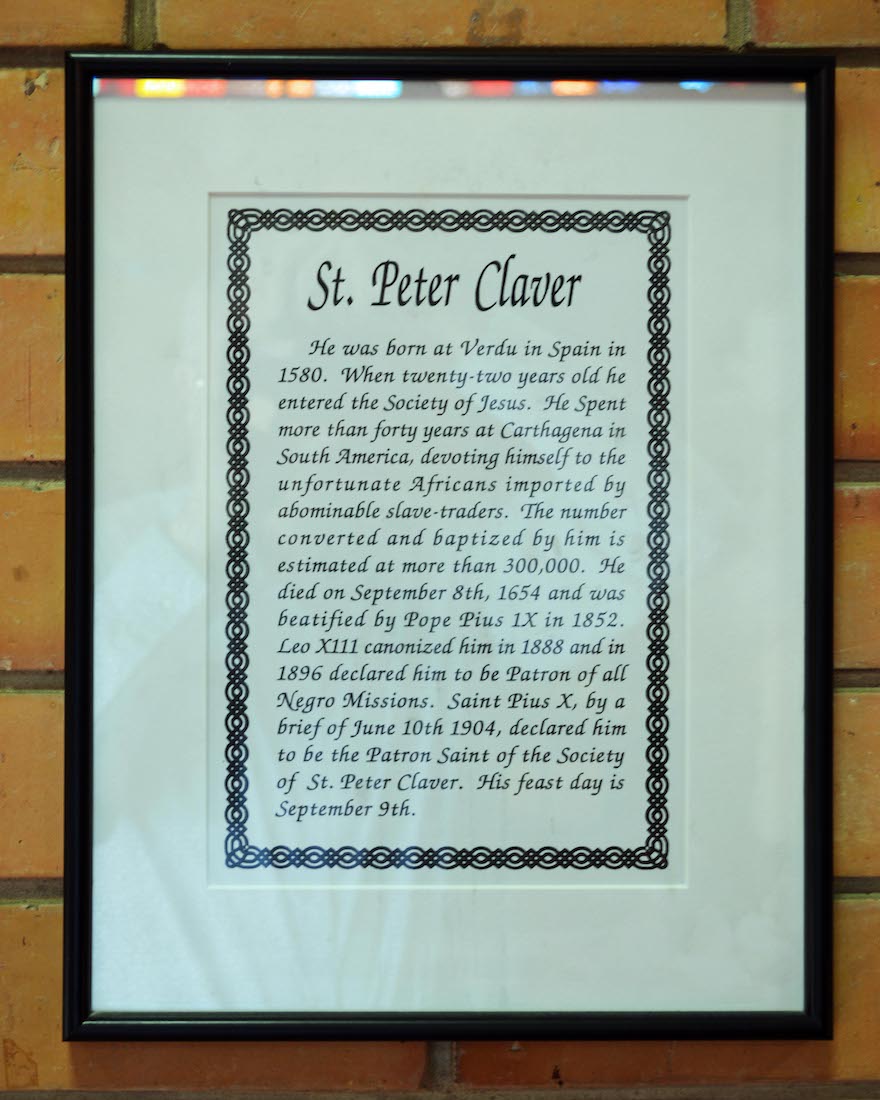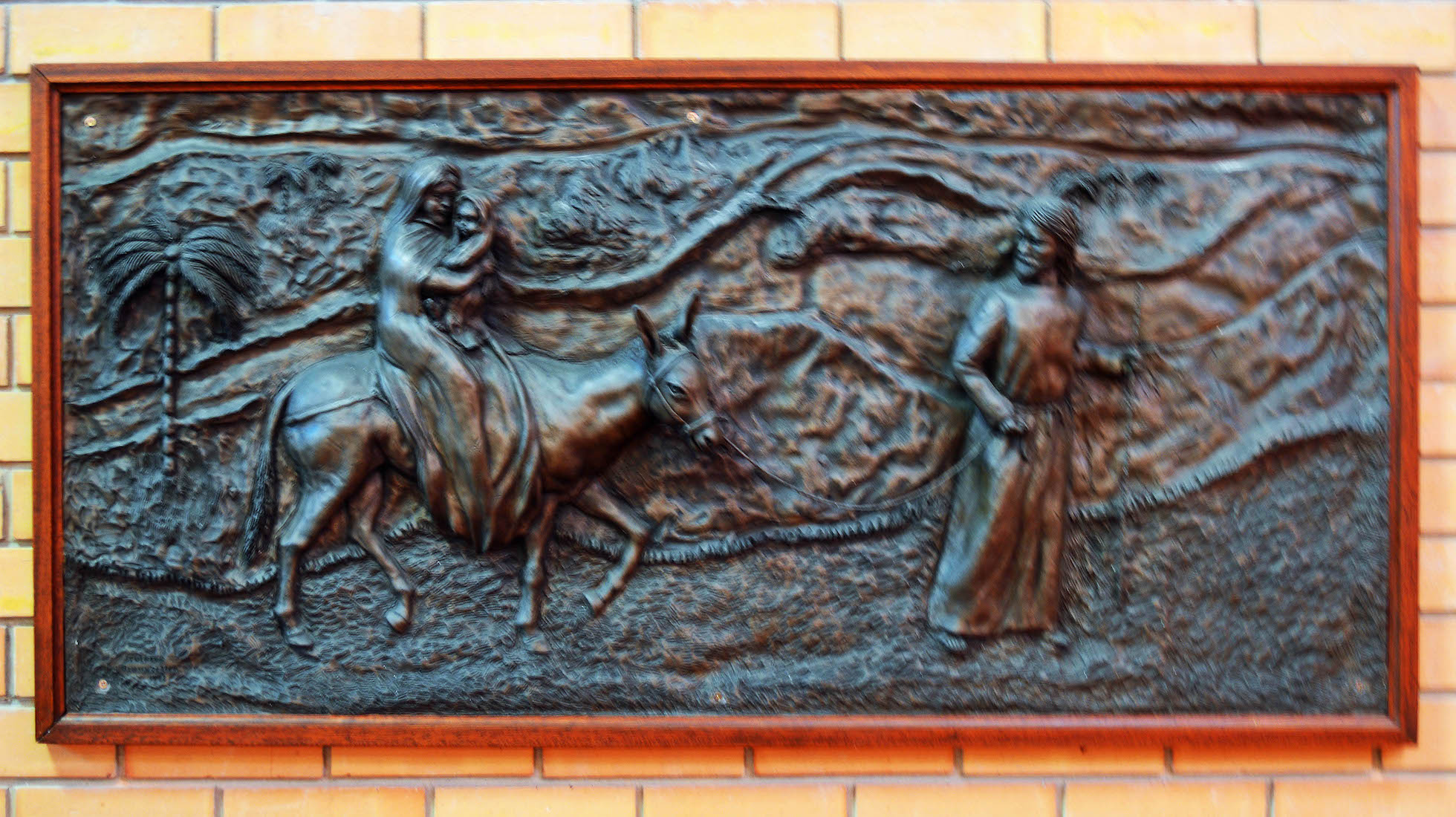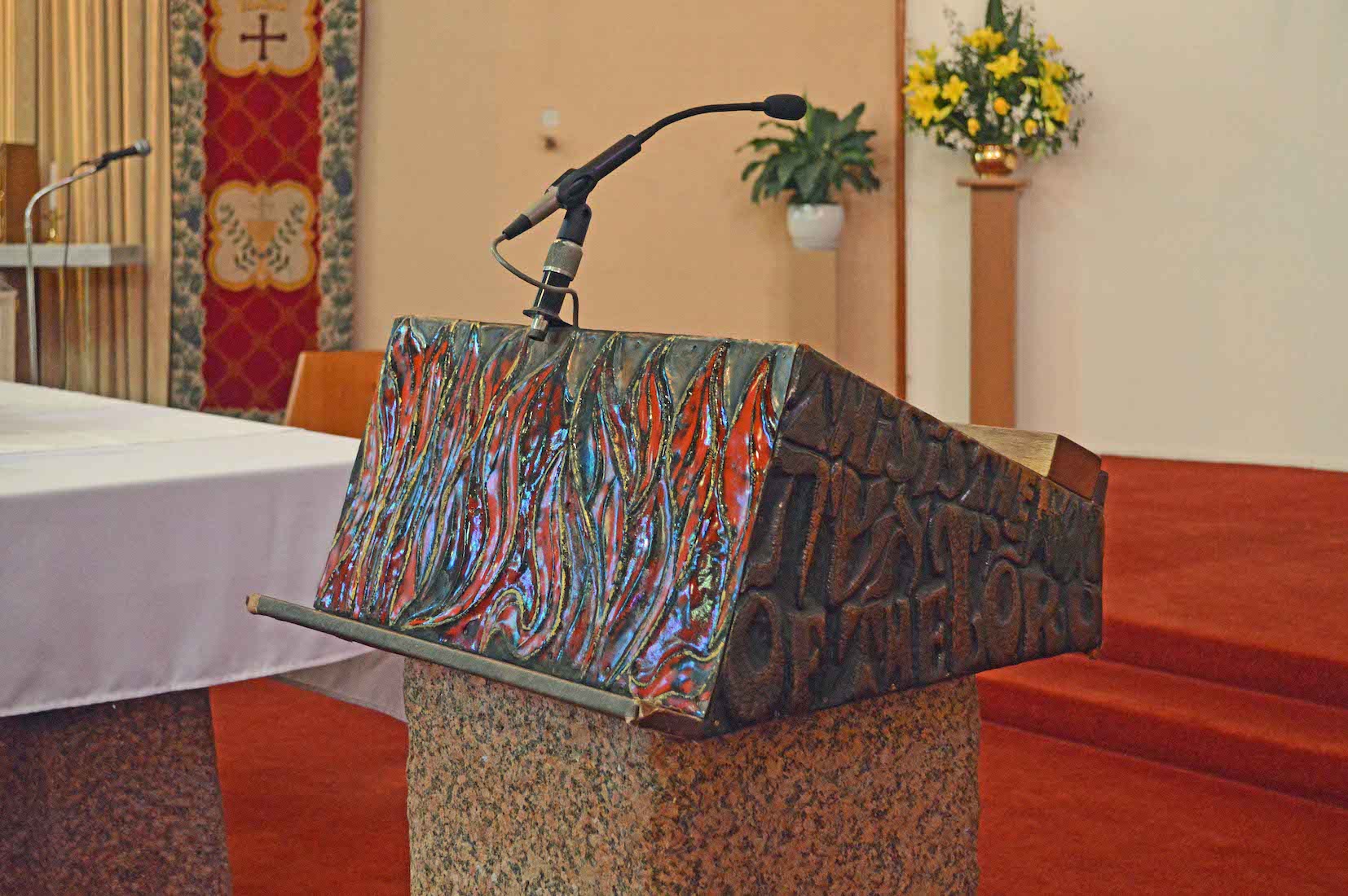22. ST PETER CLAVER

This bronze/copper art work represents St Peter Claver. It shows him as a robed standing figure carrying a cross and crown of thorns. In his right hand he holds a shell containing water, with which he is baptizing the small figure kneeling beside him. The chain indicates that this is a slave.
23. NORTH WALL
Looking ahead, along the north wall we see several plaques, a shrine to the Madonna, a well known painting of Jesus, and a dark bas-relief.
24. ST PETER CLAVER BIOGRAPHY
Peter Claver is not a well-known saint, so it is good to have this information about him. Because of his tireless work with African slaves, he has been declared Patron of all Negro Missions.
25. MEMORARE
A little further along the north wall, and close to the shrine of Mary, is this prayer to the Gracious Virgin Mary.
26. SHRINE
The shrine to the Virgin Mary shows Mary holding the Infant Jesus. It is unusual in that Mary is not dressed in the customary blue. She also has unusual footwear – a common protection against worshippers who reverently touch such statues.
27. THE DIVINE MERCY
‘The Divine Mercy’ image is a depiction of Jesus based on the devotion initiated by Saint Faustina Kowalska. ‘I promise that the soul that will venerate this image will not perish,’ Jesus told Faustina, according to her diary, which has been studied and authenticated by the Church over several decades.
28. FLIGHT INTO EGYPT
This interesting relief shows Joseph, Mary and Jesus escaping to Egypt. It is a replica of the relief crafted by B. van Zetten in 1994, found in St Francis Xavier’s Cathedral, Adelaide.
30. ALTAR
The altar is attractive with its flower arrangements, the central monstrance, and the outer candles.
31. MONSTRANCE
A monstrance is a vessel used in Roman Catholic churches for the more convenient exhibition of some object of piety, such as the consecrated Eucharistic host. It is sometimes also used as reliquary monstrance for the public display of relics of some saints. The word monstrance comes from the Latin word monstrare, meaning ‘to show’.
32. TABERNACLE
At the left of the sanctuary is a small pedestal bearing the tabernacle. A tabernacle is a fixed, locked box in which, in some Christian churches, the Eucharist is ‘reserved’ or stored. A less obvious container for the same purpose, set into a wall, is called an aumbry.
33. TABERNACLE DETAIL
This tabernacle is very attractive with its four front panels with images of a fruitful vine. There is imagery here relating to the communion wine, but also to Christ himself who proclaimed ‘I am the Vine’ (Jn 15:5).
34. BANNER
The banner below the tabernacle displays the letters ‘IHS’ which is a Christogram: the first three letters of the name ‘Jesus’ in Latinized Greek. This Christogram also includes a budded cross. As the Society of Jesus, the Jesuits took the IHS as their sign.
36. AMBO
‘Ambo’ is the official term for the pulpit in a Roman Catholic church. Many churches have both a lectern (for reading the Scripture) and a pulpit (for preaching the Word). The ambo serves both purposes here.
37. AMBO DESIGN
The flames shown on the front of the ambo remind us of the presence of God (as in the burning bush), or the coming of the Spirit (as at Pentecost). The text on the side reads: This is the Word of the Lord. There are some Hebrew symbols too ... .
38. PASCHAL CANDLE
The Paschal candle stands nearby. It has special significance at Easter where it represents the risen Christ, as a symbol of light (life) dispelling darkness (death).
39. FONT
The modern style and orange colouring of the baptismal font and the ambo suggest the work of the same artist. Atop the domed font cover is a golden dove.
40. FONT DETAIL
When Christ was baptized by John, the Spirit of God was seen descending on him like a dove (Matt 3:16). Baptism is seen as entry into the Church.




















